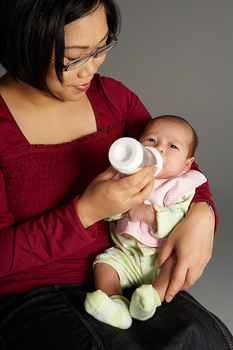----------------------------------
Newswise — Sometimes, a simple bedside exam performed by a skilled physician is superior to a high-tech CT scan, a Loyola University Health System study has found.
Researchers found that physicians' bedside exams did a better job than CT scans in predicting which patients would need to return to the operating room to treat complications such as bleeding.
"The low cost, simple, but elegant neurological exam appears to be superior to a routine CT scan in determining return to the operating room," researchers report in the Journal of Neurosurgery.
Patients typically receive CT scans following open brain surgery to remove tumors, repair aneurysms, treat brain injuries, etc. But practices vary. Some surgeons order CT scans right after surgery. Others wait until the following morning.
There are downsides. CT scans cost hundreds of dollars and expose patients to radiationNewswise — Sometimes, a simple bedside exam performed by a skilled physician is superior to a high-tech CT scan, a Loyola University Health System study has found.
Researchers found that physicians' bedside exams did a better job than CT scans in predicting which patients would need to return to the operating room to treat complications such as bleeding.
"The low cost, simple, but elegant neurological exam appears to be superior to a routine CT scan in determining return to the operating room," researchers report in the Journal of Neurosurgery.
Patients typically receive CT scans following open brain surgery to remove tumors, repair aneurysms, treat brain injuries, etc. But practices vary. Some surgeons order CT scans right after surgery. Others wait until the following morning.
There are downsides. CT scans cost hundreds of dollars and expose patients to radiation























 In June, food and chemical lobbyists met in Washington, DC to save the toxic plastic chemical BPA. Their internal meeting memos revealed a dangerous and unethical strategy to keep your family eating and drinking from BPA-laden containers, despite the mounting scientific evidence that exposure to even extremely low levels of BPA can impact health, particularly during early infancy.
In June, food and chemical lobbyists met in Washington, DC to save the toxic plastic chemical BPA. Their internal meeting memos revealed a dangerous and unethical strategy to keep your family eating and drinking from BPA-laden containers, despite the mounting scientific evidence that exposure to even extremely low levels of BPA can impact health, particularly during early infancy. 

